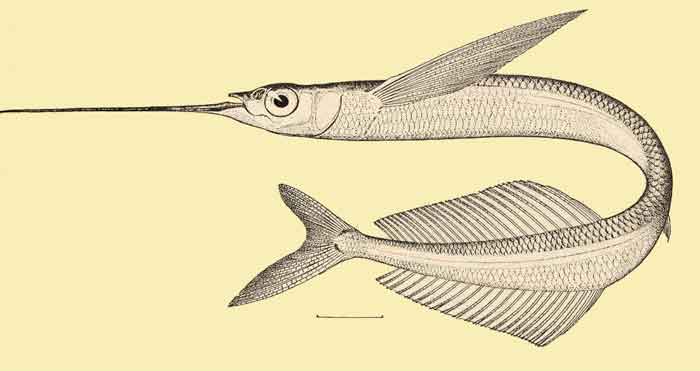Superregnum: Eukaryota
Cladus: Unikonta
Cladus: Opisthokonta
Cladus: Holozoa
Regnum: Animalia
Subregnum: Eumetazoa
Cladus: Bilateria
Cladus: Nephrozoa
Superphylum: Deuterostomia
Phylum: Chordata
Subphylum: Vertebrata
Infraphylum: Gnathostomata
Megaclassis: Osteichthyes
Superclassis/Classis: Actinopterygii
Classis/Subclassis: Actinopteri
Subclassis/Infraclassis: Neopterygii
Infraclassis: Teleostei
Megacohors: Osteoglossocephalai
Supercohors: Clupeocephala
Cohors: Euteleosteomorpha
Subcohors: Neoteleostei
Infracohors: Eurypterygia
Sectio: Ctenosquamata
Subsectio: Acanthomorphata
Divisio/Superordo: Acanthopterygii
Subdivisio: Percomorphaceae
Series: Ovalentaria
Superordo: Atherinomorphae
Ordo: Beloniformes
Subordo: Belonoidei
Superfamilia: Exocoetoidea
Familia: Hemiramphidae
Subfamilia: Hemiramphinae
Genus: Euleptorhamphus
Species: E. velox – E. viridis
Name
Euleptorhamphus Gill, 1859
Gender: masculine
Type species: Euleptorhamphus brevoortii Gill, 1859, by original designation.
References
Gill, T. N. (1859) Description of a third genus of Hemirhamphinae. Proceedings of the Academy of Natural Sciences of Philadelphia 11: 155–157.
Links
Euleptorhamphus – Taxon details on Integrated Taxonomic Information System (ITIS).

Euleptorhamphus viridis
Euleptorhamphus is a genus of halfbeaks (family Hemiramphidae) in the order Beloniformes.[2][3][4]
Species
There are currently two recognized species in this genus:[5]
Euleptorhamphus velox Poey, 1868 (Flying halfbeak)
Euleptorhamphus viridis (van Hasselt, 1823) (Ribbon halfbeak)
Both of these species are marine. E. velox occurs in coastal and oceanic waters from the western Atlantic from New England south through the Gulf of Mexico and Caribbean Sea to Recife, Brazil and eastern Atlantic from the Cape Verde Islands, Sierra Leone, and Nigeria.[2][3] E. viridis is widely distributed in tropical and subtropical waters of the Indo-Pacific.[2] It is usually oceanic, but enters large open bays and is also found around islands.[4]
Euleptorhamphus velox may reach up to 61.0 centimetres (24.0 in) TL.[3] E. viridis may grow up to 53.0 cm (20.9 in) TL.[4]
Euleptorhamphus viridis is able to jump out of the water and fly short distances, by twisting the back half of its body 90° so its symmetrical dorsal and anal fins can act as a pair of gliding wings.[4][6]
References
Sepkoski, Jack (2002). "A compendium of fossil marine animal genera". Bulletins of American Paleontology. 364: 560. Archived from the original on 2011-07-23. Retrieved 2008-01-08.
Collette, Bruce B. (February 2004). "Family Hemiramphidae Gill 1859 -- halfbeaks" (PDF). California Academy of Sciences Annotated Checklist of Fishes. Archived from the original (PDF) on 2006-06-23.
Froese, Rainer; Pauly, Daniel (eds.). "Euleptorhamphus velox". FishBase. Aug 2007 version.
Froese, Rainer; Pauly, Daniel (eds.). "Euleptorhamphus viridis". FishBase. Aug 2007 version.
Froese, Rainer; Pauly, Daniel (eds.). "Species in genus Euleptorhamphus". FishBase. June 2012 version.
Wishart, Skye (July–August 2018). "Ribbon halfbeak". New Zealand Geographic (152): 20.
Retrieved from "http://en.wikipedia.org/"
All text is available under the terms of the GNU Free Documentation License

